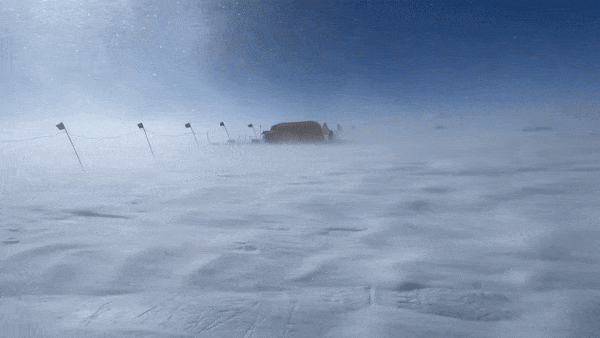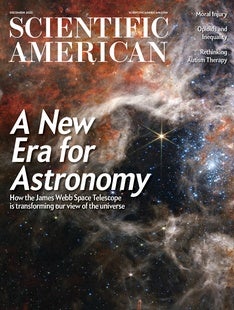 |
| February 09, 2023 |
This week, we're talking about new ways to tackle old problems. Not that long ago, if you wanted to document something strange seen in the sky, there were few options besides scribbling down your impressions, contacting local authorities, and perhaps (with considerable luck and skill) snapping a too-blurry photograph. Today, you can do all that—and much more—with a wave of your smartphone. Our lead story discusses how the resulting torrents of data, much of it crowdsourced, may soon transform the scientific study of Unidentified Aerial Phenomena (UAP)—more colloquially known as UFOs. Keeping with our theme, our other featured stories this week cover problem-solving with unprecedentedly powerful "exascale" supercomputers, and how shaking a steel ball-filled container can create an entirely new form of ice that may exist in the depths of Europa, Titan, Enceladus and other frozen moons of the outer solar system. Enjoy! |
| | Lee Billings, Senior Editor, Space & Physics
| |
 |
| |
| |
| |
| |
| |
| Climate Change Inside the Race to Find Earth's Oldest Ice A global race is on to drill for the oldest known layers of Antarctic ice so researchers can peer back in time to a warmer climate to better understand the planet's hotter future | | | | |
| |
| |
| Artificial Intelligence Coming Soon to Your Podcast Feed: Science, Quickly A new era in Scientific American audio history is about to drop starting next week—get ready for a science variety show guaranteed to quench your curiosity in under 10 minutes. |  | By Jeffery DelViscio,Tulika Bose | 04:10 | | | |
| QUOTE OF THE DAY
 "A million blurry images are worthless, compared to a single high-resolution video that resolves an object as it maneuvers... The only way to advance our knowledge on the nature of [Unidentified Aerial Phenomena] is through the assembly of high-quality data from instruments that are fully calibrated and yield reproducible results." Astrophysicist Avi Loeb, on the need for high-quality data on UAP | |
FROM THE ARCHIVE
 | | | |
LATEST ISSUES
 |
| |
| Questions? Comments?  | |
| Download the Scientific American App |
| |
| |


.jpg)


















